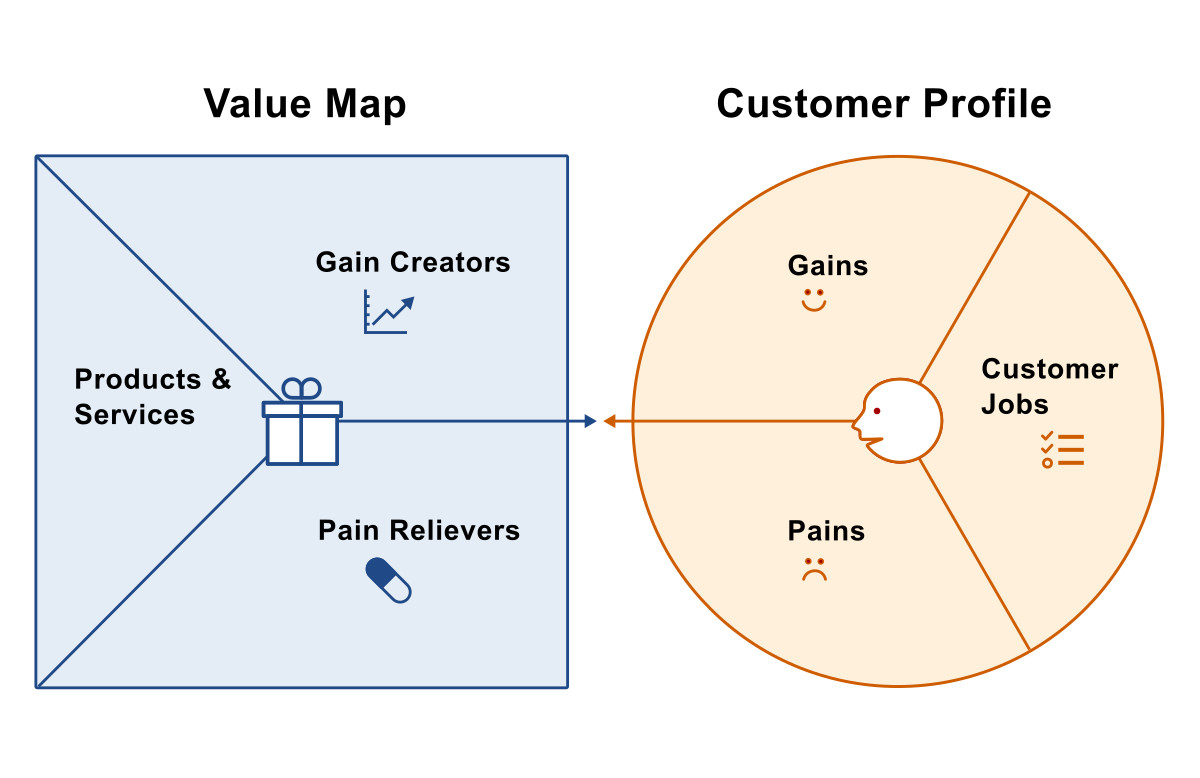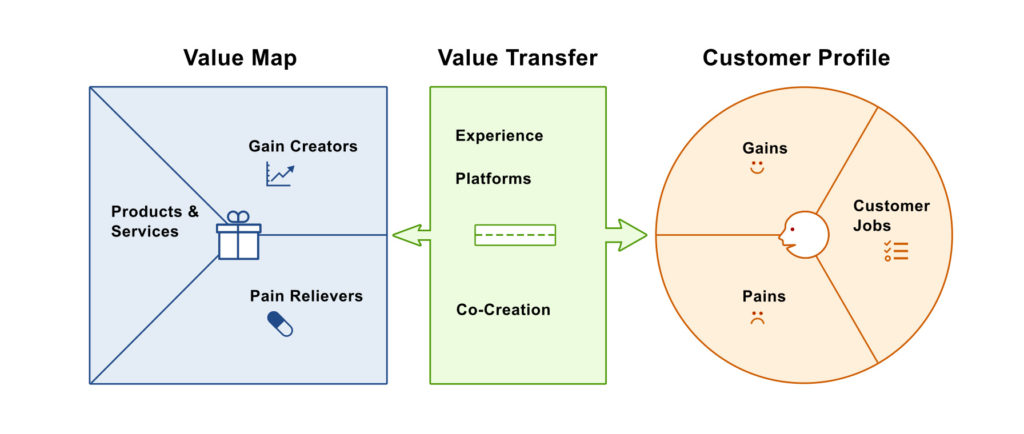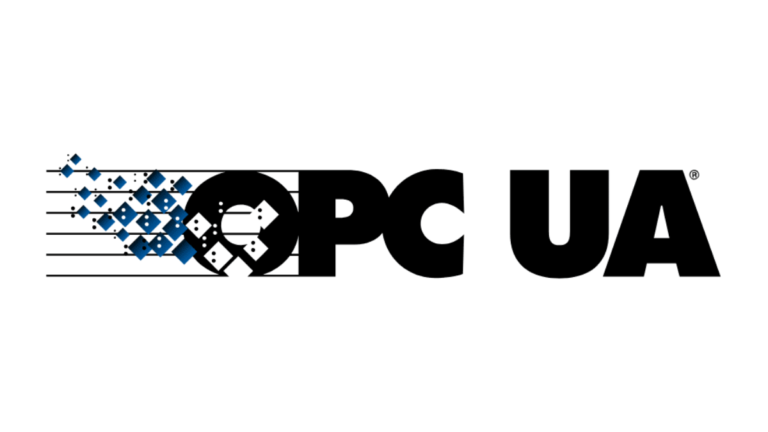In order to develop successful smart products, it is important to systematically analyze the benefits and thus the value of the planned product for the customer.
For this purpose the Swiss business theorist Alexander Osterwalder has developed an interesting method, which has become popular under the name Value Proposition Canvas.
With this tool, product ideas can be analyzed, questioned and improved in a creative way – in order to fundamentally ensure that the customer really wants such a product.
The Value Proposition Canvas
If you don’t know the Value Proposition Canvas (VPC) yet, it’s best to let Osterwalder himself explain it in an entertaining way – either in his book or in the video (the impatient among you can jump to 10:16 ).
In short, the VPC uses a scheme (“canvas”) to compare two perspectives (see graphic below):
the customer profile and
the value promise of the manufacturer (“value map”).
The analysis begins customer-oriented with the user’s field of activity. You take a look at the tasks your target group has to cope with – and the hurdles (“Pains”) and amenities (“Gains”). The trick is to completely hide the advantages of your product. Only once it is clear what the customer really wants, does the process continue. Then the customer perspective is contrasted with the value proposition of the manufacturer. The product features are listed and the functionalities with which the customer’s difficulties can be removed (“Pain Relievers”) or which provide a sense of achievement (“Gain Creators”). Both sides can then be balanced by new ideas (“Fit”).

The Value Proposition Canvas for smart products







Sorry, comments are disabled on this post.